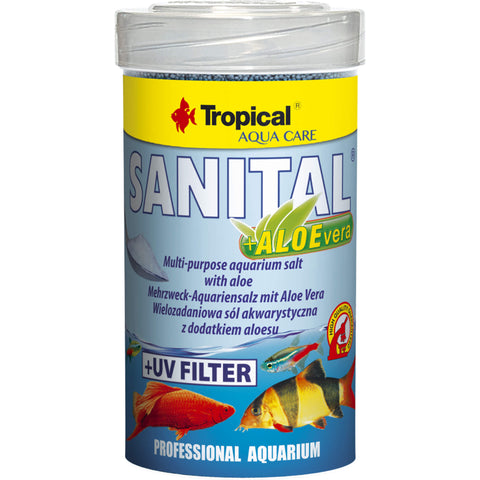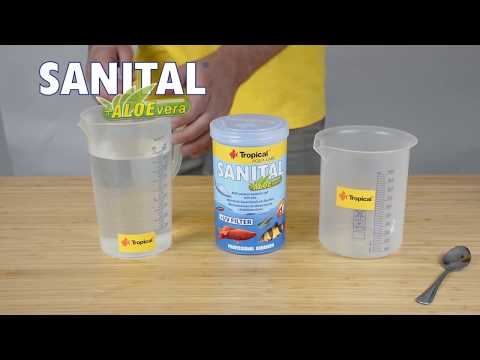17 products
Algae control in the aquarium
Algaecide to control algae in the aquarium
Successful aquarium algae control
Algae are a natural part of the aquatic ecosystem and can occur in almost any aquarium. They are caused by the presence of nutrients such as nitrate and phosphate in the water, which are introduced from various sources such as fish food, dead plant remains or fish faeces. In addition, factors such as excessive lighting duration, inadequate filtration or an imbalance of plants to fish play a role in algae formation.
Although a certain amount of algae growth in the aquarium can be normal and even desirable as it is part of the natural balance in the aquarium, aquarium owners often want to avoid or control excessive algae growth. The following are some of the reasons for controlling algae in the aquarium:
- Aesthetics
Too much algae can spoil the appearance of the aquarium. They can coat the glass, decorations and even the plants, resulting in a dull and unkempt appearance. - Competition for nutrients
Excessive algae growth can lead to the aquatic plants being deprived of important nutrients. This can affect the growth and health of the plants and lead to an unbalanced ecosystem. - Oxygen deficiency
In aquariums that are heavily overgrown with algae, increased algae respiration can occur, which consumes oxygen. This can lead to a lack of oxygen for the fish and other aquarium inhabitants and jeopardise their health. - Filter clogging
Algae can also clog the filter media in the aquarium, which leads to reduced efficiency of water filtration and thus reduces the water quality, which in turn can affect the health of the fish.
It is therefore important to control and reduce algae growth in the aquarium to ensure a healthy and visually appealing environment for the aquarium inhabitants. The elimination of algae and the implementation of appropriate prevention and control measures are crucial to maintaining a balanced and stable aquarium.
Algae in the aquarium
Algae in the aquarium are plant organisms that live in the water and photosynthesise. They are autotrophic organisms as they can produce their own food from sunlight, water and nutrients. Algae can come in different shapes and sizes and are a natural part of many aquatic ecosystems, including aquariums.
Types of algae in the aquarium
Various types of algae can occur in aquariums. Identifying the type of algae in the aquarium is important because different types of algae have different causes and conditions for their growth. Accurate identification of the type of algae in the aquarium enables aquarium owners to take targeted measures to combat and control it.
- Green algae (Chlorophyta)
Green algae in the aquarium are the most common algae in aquariums. They can present themselves in various forms, from filamentous to plate-like structures. Green algae often appear when the light is too strong or when there are too many nutrients in the water. The best-known green algae include smear algae (Enteromorpha), filamentous algae (Oedogonium sp., Cladophora), floating algae (e.g. Chlorella sp., Ankistrodesmus sp., Scendesmus sp., etc.), spot algae / shield algae (Coleochaete), fuzz algae (Oedogonium sp.) and fur algae (Oedogonium sp.). - Red algae (Rhodophyta / Rhodophyceae)
Red algae in the aquarium are often reddish to purple in colour and can occur on plants and decorations in the aquarium. They normally favour acidic conditions and can indicate an iron deficiency in the water. The best-known red algae include brush algae (Audouinella sp., Rhodochorton sp.) and beard algae (Compsopogon sp.). - Brown algae (Phaeophyta)
Brown algae in the aquarium can appear in the form of dark brown deposits on surfaces in the aquarium. These algae often occur in newly set up aquariums and may indicate a lack of lighting or a disturbance of the biological balance. The best known brown algae include hair algae (Spirogyra), etc. - Blue-green algae (cyanobacteria)
Although cyanobacteria are not actually algae, they are sometimes referred to as blue-green algae. They can spread as sticky, blue-green coatings on decorations and substrate. An oversupply of nutrients, especially phosphate, can contribute to their growth. - Diatoms (Diatoms / Bacillariophyta)
Diatoms in the aquarium often appear as brown deposits on decorations and plants and are often mistakenly referred to as brown algae. They can appear in newly set up aquariums and are sometimes a temporary phenomenon that stabilises over time. - Black algae
The term "black algae" is sometimes used to refer to dark or black deposits or coatings in aquariums. These dark deposits can be caused by various organisms, including certain types of cyanobacteria (blue-green algae), dark mould species or even algae species with dark pigmentation.
It is important to note that the term "black algae" does not refer to a specific group of algae in the scientific sense, but rather is an informal term for dark, undesirable deposits in the aquarium.
The identification and control of dark deposits requires a close examination of the conditions in the aquarium. Factors such as light intensity, nutrient levels, water circulation and maintenance practices can all influence whether and what type of dark deposits occur in the aquarium.
Effectively combating algae in the aquarium
There are various tried and tested methods and measures that can be used to effectively combat algae in the aquarium. The following approaches have proven to be the most effective:
- Regular water changes
Regular water changes help to remove excess nutrients in the aquarium and thus reduce algae growth. By changing part of the water, other pollutants and impurities are also removed. - Optimum lighting duration
Algae benefit from excessive lighting. It is important to set the lighting duration according to the needs of the plants living in the aquarium and not to exceed it. Normally 8-10 hours of lighting per day is sufficient. - Balanced feeding
Excessive feeding of the fish leads to an excess of nutrients in the water, which promotes algae growth. Feed your fish in optimum quantities and remove any excess food that has not been eaten. - Promote plant growth
Healthy, fast-growing aquatic plants can help to absorb excess nutrients from the water and thus curb algae growth. Make sure you provide adequate lighting, CO2 and nutrients for your aquatic plants. - Remove algae
Use suitable tools such as the algae eraser, magnetic disc cleaner or algae scraper to manually remove existing algae from the glass or plastic surfaces. Regular cleaning helps to keep algae in check. - Use algaecide
In the case of heavy algae growth, algaecides can be used as a supportive measure. Choose a suitable algaecide that suits the specific needs of your aquarium and follow the manufacturer's dosing instructions carefully.
It is important to note that controlling algae is an ongoing process and requires some patience. A combination of several measures is often the most effective. Monitor your aquarium regularly to recognise changes in algae growth and act accordingly.
If you have any questions or require further information on the products we offer, we will of course be happy to assist you with our expertise.
























